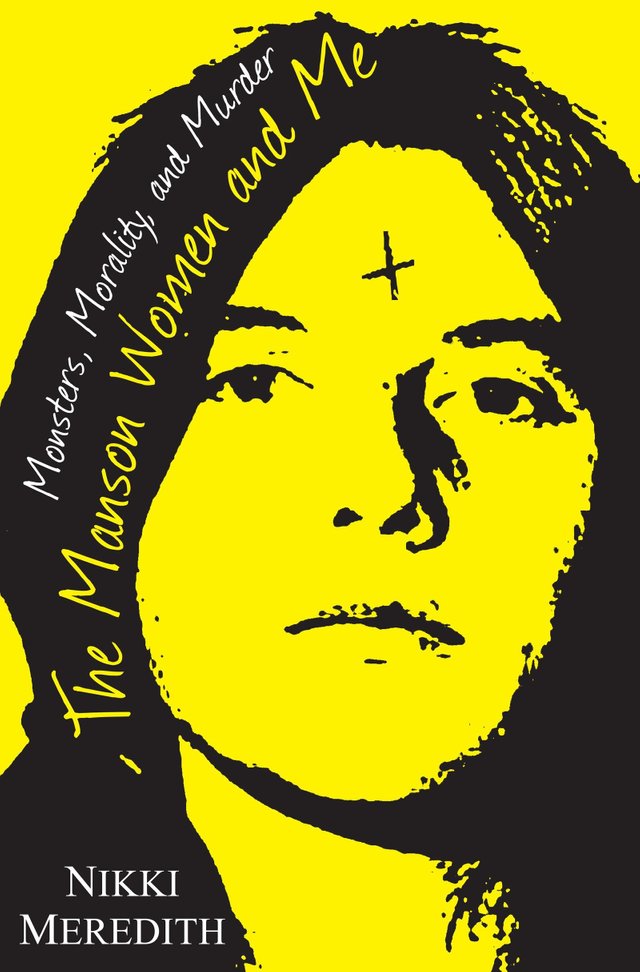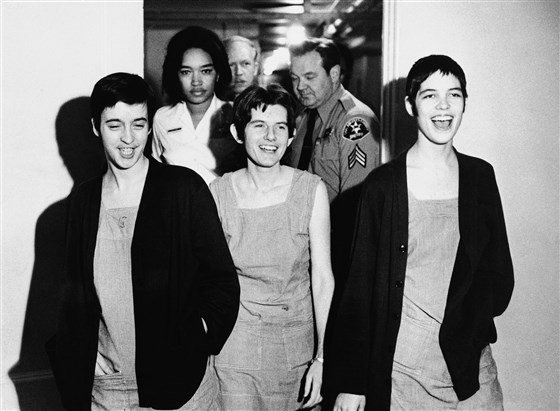Autotherapy with the help of Charles Manson about ”The Manson Women and Me. Monsters, Morality, and Murder” by Nikki Meredith.
Nikki Meredith decided to understand something that cannot be understood. She wanted to know what brought Manson’s women to commit the crime. To this end, she reached - not without difficulty - the murderers in prison, Leslie Van Houten and Patricia Krenwinkel, and interviewed their relatives, acquaintances and psychologists. She did everything not to see them as dark monsters, she wanted to see in these women not even people, but herself. Wherever we would instinctively seek differences, trying to push the enormity of this crime from our humanity and dehumanize the perpetrators, Meredith sought similarities. Similarities to own lives, choices and family problems. Unfortunately, she searched too intensely and too obsessively.
Vincent Bugliosi, the prosecutor in the trial of Manson's gang, called its members human monsters, mutated individuals without heart and soul. Nikki Meredith did not believe this, claiming that when she met the women who were under the influence of the guru, she was certain that before they had a relationship with Charles Manson, they had everything necessary to be compassionate human beings. Manson, never really having a family, knew how to plant a sense of community and family in his mentees. He knew how to keep their innermost dreams alive, how to accept themselves and feel good about themselves - just so much and as much. When we add the transfer of his own delusions to the whole group, it turns out that it doesn't take much to create a cold killer.
Meredith looks for coherence, logic and consistency between raising her mother and her daughter's behavior during the crime. She is looking for a bridge between the little princess and the cold killer. In relationships with parents, she wants to find cause and effect relationships; in a word, something that has already been analyzed in all ways by people who have written entire volumes of mutually exclusive analyzes, densely filled with vague arguments. It is worth adding arguments that show the state and trends of contemporary psychoanalysis rather than the actual state. So, by default, we have a theory of emotional projection, a theory of parental emotional distance, a theory of addiction to parents, and I suspect that as if Freud was no longer passé, we would read something about phallic knives. In short, the author summarizes the entire aforementioned volumes of files in an express pace, in which psychoanalysts laboriously pointed the patient to the need of the theory she was professing. Fortunately, Meredith is well aware that she is entering pseudoscience based on causality and the domain of psychoanalytical quackery.
Unfortunately, she does not propose anything in return, nor does she comment on these theories.
Whenever she came across any empathy article, she wrote to the author to explain what neurological processes could have occurred on the murderers on the day of the crime. The answer was usually the same: brain research is too young a field of science to be clear about. And this, however, does not prevent the author from promoting those concepts which she advocates. Those that put the killers in the best light. Despite this, Meredith does not find the answer to the question of how Manson's primitive categorization turned out to be sufficient to make those people lives at two homes in Beverly Hills and Los Feliz unworthy of life. Searching for this answer, however, she goes into very dangerous areas - a list of murders committed by Manson followers with the slaughter of Tutsi, the Mayans, with the attacks of September 11, 2001, the activity of the so-called Islamic State or the Holocaust is at least disputable. Manson's women did not kill to expand "living space" or revenge for the years of persecution. In addition, the dehumanization of "others", so crucial for Meredith and underlying this peculiar parallel, in the case of the above-mentioned acts of genocide was, which the author does not want to notice, barely one of the many factors accompanying the capture of territory.
What is worse, this report does not even have the signs of objectivity. Meredith became addicted to contact with murderers; she crossed far too many borders to treat her text as even a bit reliable. When Pat stopped writing to her, she was sad, confused, experienced withdrawal syndrome, believing that they would keep this acquaintance for the rest of her life. One of Meredith's intentions was to analyze how much the same forces acted in her fate to which the two assassins were subjected - a peculiar idea, especially since she is trying to compare it with the fate of her brother convicted of robbery. The Manson Women and Me contain very extensive autobiographical plots and discussions about the author's family, her childhood and family sightseeing trips, which are nothing more than fill the plot gap. Actually, if the book were limited to actual descriptions of the female monsters, only a rather extensive article would be created.
The Manson Women and Me. Monsters, morality, and Murder could have been an interesting picture of the world torn between tradition and counterculture, in which it was fashionable to shed the burden of the past. The image of a world of shattered hopes - it was written that the expectations of the 1960s were dispelled when Atkins, Krenwinkel and Watson killed 18-year-old Steven Parent, encircled four residents of the house, and then tortured, stabbed or shot them. The Manson Women and Me could have been a book about the title banality of evil and about the government of souls with cheap promises. Finally, they could just be the story of women who believed in freedom so much that they decided to kill in the name of that freedom. Meredith wrote that the result of her journey is a mosaic of associations, some of which directly relate to Manson's women, some are loosely associated with them, and others are of secondary importance. To tame such a chaotic patchwork and make it coherent, you would need a powerful workshop and an excellent pen. The author has neither one nor the other. There is also no idea how to connect it all together; before one of the interviews she told her interlocutor that she still had not decided on what exactly she would like to focus on, but she would love to talk to her. Willingness was probably not lacking until the end of the book, but there was also a lack of decision on what exactly to focus on. In addition, of course, focus on yourself, because in this the author is excellent. Interesting is one of her reflections, which was born during a conversation with Van Houten mother; about her brother in jail and her worried mother. It is a pity that similar reflections did not happen to her much more often, because it turns out that Nikki Meredith's The Manson and Me is just a book about Nikki Meredith, a kind of self-therapy that is probably supposed to deal with demons of the past, Jewishness (which hurts her very much), complexes and phobias. The subject raised outpaced the author and decided to focus on psychoanalysis of herself. However, I believe that the place for such self-therapeutic notes is the psychoanalyst's office rather than the publisher's desk. And if not every note, then certainly yes.

